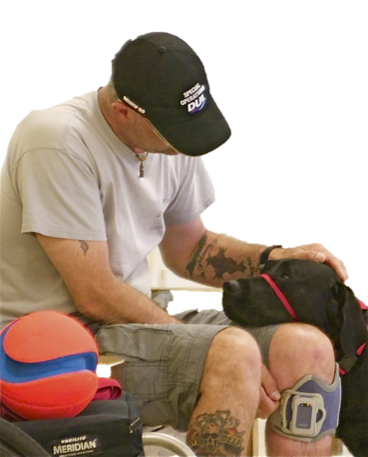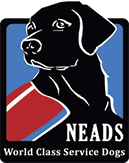What to Look for in a Service Dog for Veterans Program
Whether it’s partnering a Service Dog with a veteran with hearing loss, physical disabilities, or PTSD, the goal of any Service Dog for Veterans program is ultimately to help the veteran reintegrate into his or her community. And while there are many organizations who address the needs of the veteran in many different ways, it’s important to be sure the organization you choose can meet these expectations.
Here are the top 4 features to look for when evaluating a Service Dog for Veterans program and how the NEADS programs measure up.
Program Feature #1: Track record of helping veterans through highly trained Service Dogs
NEADS:
- Service Dogs for Veterans program in place for 14 years
- Service Dogs provided to veterans at no charge to the veteran
- Over 40 years of serving people with disabilities nationwide
- Training overseen by Senior Trainers with 48 years of combined experience in the Service Dog industry and who have been involved with the program since it began
- ADI (Assistance Dogs International) Member*
* A veteran’s Service Dog must come from an ADI organization in order to obtain the VA Service Dog benefit. The VA still welcomes non ADI dogs on campus, but will not provide the benefit.
Program Feature #2: Fully trained Service Dog that meets an individual’s needs
NEADS Dogs:
- Bred for specific temperament, health, and personality traits
- Trained for 14-18 months in obedience and 50-60 tasks to support veterans
- Senior trainers involved from puppyhood through advanced training
- Exemplifies proper Service Dog behavior in public: walks on a leash without pulling; ignores distractions; is quiet and unobtrusive unless performing specific task work
- Veteran/Service Dog team is certified by Assistance Dogs International (ADI)
Program Feature #3: Assessment and matching by team that fully understands military culture
NEADS:
- Veteran-to-veteran screening and intake interview
- Senior Trainers have firsthand knowledge of dog’s temperament and abilities to allow for best match between Service Dog and client
Program Feature #4: Thorough veteran training + support for the life of the Service Dog
NEADS:
- Up to 2-week on campus training conducted by Senior Trainers
- Veterans trained together to promote peer-to-peer interaction and support
- Instruction on task work, care, and health of the dog, and public access rights
- Community trips under guidance of Senior Trainers
- Guidance and support in obtaining pet insurance
- Staff support and follow-up assistance for the life of the Service Dog

